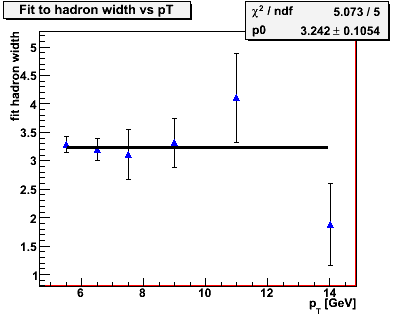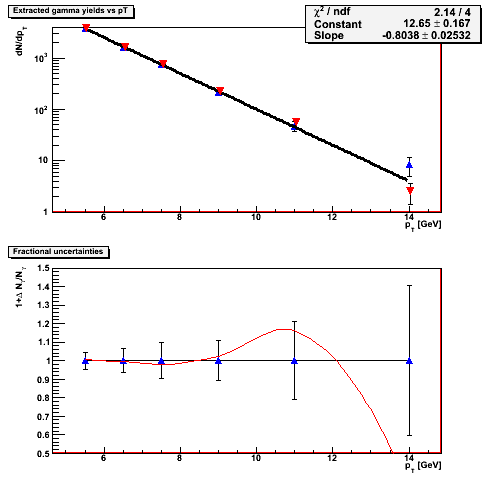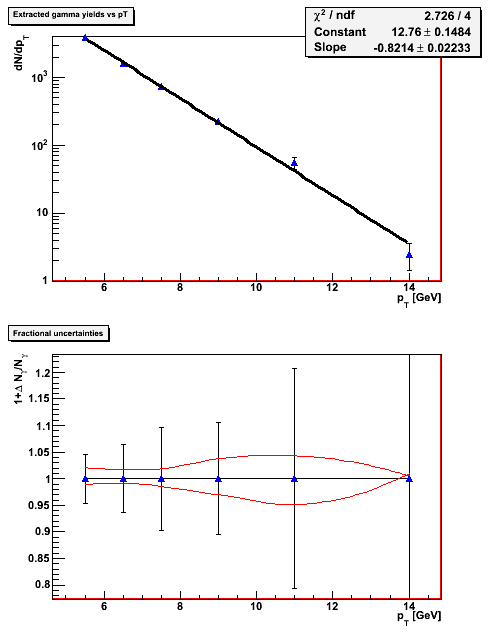- jwebb's home page
- Posts
- 2019
- 2018
- 2017
- 2016
- 2015
- 2014
- 2013
- November (1)
- October (1)
- September (1)
- July (1)
- June (1)
- April (1)
- March (3)
- February (1)
- January (1)
- 2012
- 2011
- December (2)
- September (3)
- August (5)
- July (6)
- June (6)
- May (1)
- April (5)
- March (5)
- February (2)
- January (2)
- 2010
- December (3)
- October (3)
- September (2)
- August (2)
- June (2)
- May (4)
- April (4)
- March (2)
- February (4)
- January (10)
- 2009
- 2008
- 2007
- 2006
- July (1)
- My blog
- Post new blog entry
- All blogs
EEmc Gammas via conversion method, systematics III
Updated on Mon, 2008-03-31 10:12. Originally created by jwebb on 2008-03-31 09:49.



1.0 Fixing the hadronic width parameter
Figure 1.1 -- Width of the hadronic background contribution vs pT (see EEmc Gammas via conversion method, systematics II section 2.1 for fits).

Observations:
1. The width parameter of the hadronic background is consistent w/ a constant. We therefore fix this width and extract yields.
Figure 1.2 -- Yields extracted w/ the original extraction scheme (blue points) compared with yields extracted using a fixed width for the hadronic background contribution (red points, line).

Observations
1. The yields at low pT are not significanly effected much by a change in the hadron width.
2. The yields for pT > 10 GeV are significantly effected. While I might claim "poor statistics" in the last bin, the fit in the 11 GeV bin looks reasonable.
2.0 Systematic uncertainty due to width of hadronic background
Figure 2.1 -- Extract yields with width set to 3.242 +/- 1.054, i.e. the nominal value +/- 1 sigma. Compare the yields with hadronic widths +/- 1 sigma (red lines) to the yields with the width set at the nominal value of 3.242.

Observations:
1. Uncertainty in the hadronic width introduces a ~2% (low pT) to 5% (11 GeV) systematic uncertainty in the extracted yields. My guess is that, with better statistics at high pT, this uncertainty will be reduced somewhat.
2. However, evidence curently suggests that hadronic contamination is higher at high pT than at low pT. See EEmc Gammas via conversion method, systematics II section 2.1. So we may have to live with some level of hadron contamination at high pT, and increased error bars as a consequence.
»
- jwebb's blog
- Login or register to post comments
